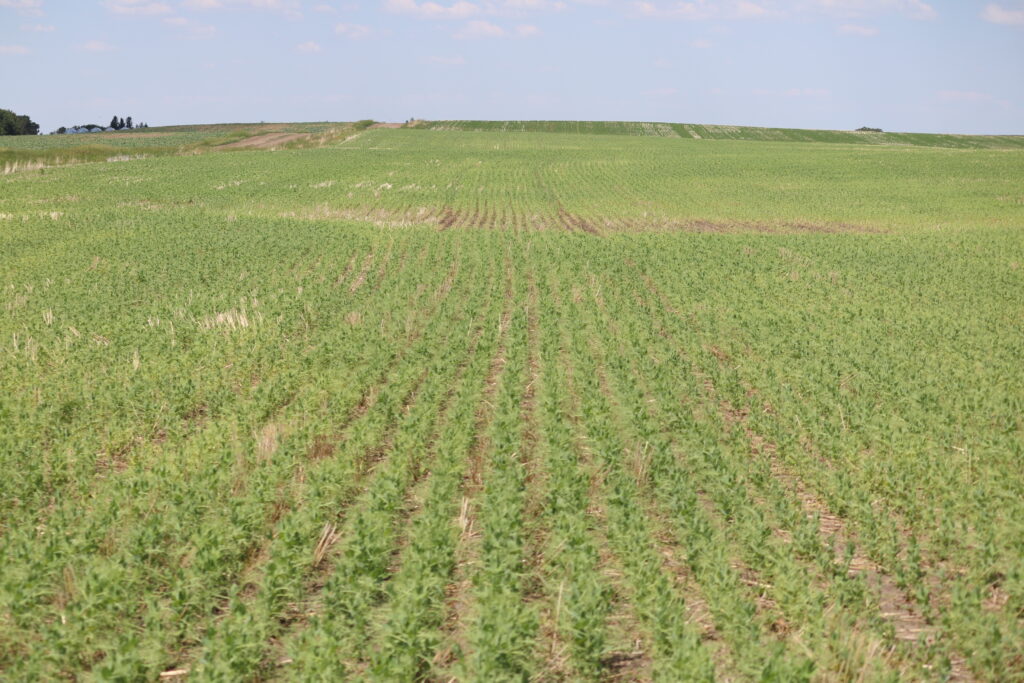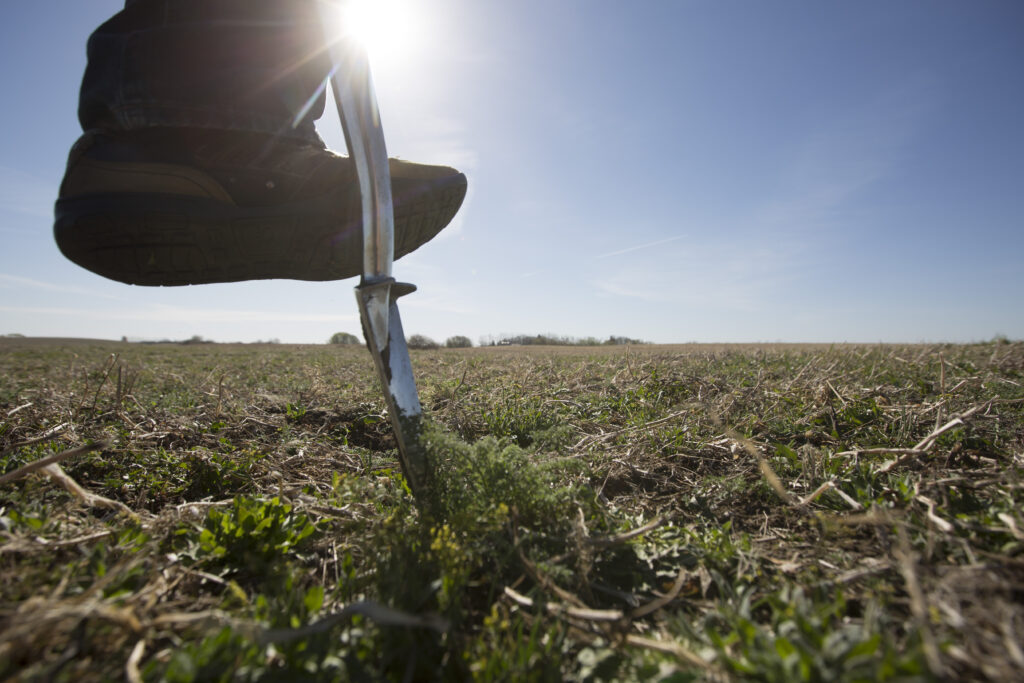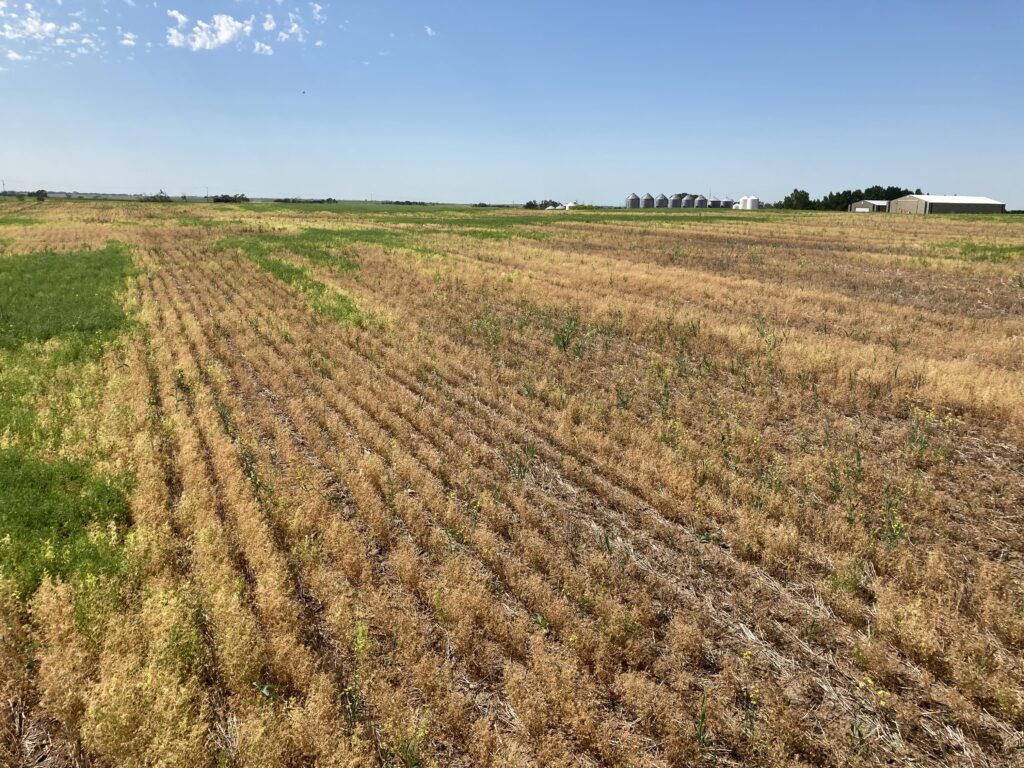
Root rot complex research has been ongoing since Aphanomyces was first identified in Saskatchewan in 2012. Since then, the Saskatchewan Ministry of Agriculture has conducted root rot surveys in peas and lentils.
Incidence results from the last three years of surveys:


Root Rot Research
Dr. Chatterton and her co-investigators have conducted over ten years of research and product testing looking for solutions to Aphanomyces and Fusarium spp. root rot in peas and lentils. Unfortunately, very little has been successful in the field, and results in both product efficacy and agronomic practices have been inconsistent.
Dr. Chatterton and other researchers like Dr. Michelle Hubbard and Dr. Sabine Banniza continue to work on figuring out what combination of stacked treatments and practices can turn the tide in the battle against root rot complex infections. This includes layering practices like fertility management, soil amendments, resistant pea and lentil varieties, seed treatments, the use of biologicals and practices like the impact of seeding date and soil temperature.
The ongoing Root Rot Task Force (RRTF) funded research has investigated using and combining several soil amendments, natural products, and biological control options. Below are some of the research findings to date:
Soil Amendments
- Calcium: Thought to prevent zoospore production from oospores, as soils with more free calcium had greater A. euteiches suppression and subsequent disease reduction. However, results have been inconsistent, and no measurable decrease in oospore levels has been recorded.
- Lime: Research on the Prairies has begun to understand if liming soils will suppress Aphanomyces root rot and if liming is economically and physically feasible for growers. Preliminary results have indicated that surface applications of lime did not change the calcium concentration of the soil, and incorporation of high amounts of lime would likely be necessary. Positive results from incorporating lime may be from increasing surface soil pH, which benefits overall crop health rather than mitigating Aphanomyces and root rot complex.
- Brassica Green Manure: Research is being conducted to determine the effectiveness of Brassica green manure crops on Aphanomyces root rot suppression the year before planting a host crop, as some Brassica residues have been previously found to reduce Aphanomyces severity in other research studies. Again, the results have been inconsistent and have not been shown to reduce oospore levels in the soil.
- Oat Residue: Studies have found that fall-incorporated oat residue from growing oats in the previous crop year reduced Aphanomyces in peas the following year. However, excess traffic from secondary tillage, such as harrowing and seeding, caused enough soil compaction to void any disease suppression from the oat residue.

Soil Properties
A study in Sweden identified two groups of soils that suppressed Aphanomyces root rot samples taken at a 20 cm (8 inch) depth.
The first group had high sand content (56–73%), low clay content (9–12%), and higher than average organic carbon content. Organic carbon directly measures soil organic matter and soil health or resiliency.
The second group had a high pH (greater than 6.7), high calcium content (greater than 17 centimoles per kilogram), and high clay content (19–21%), with a high ratio of vermiculite-smectite to illite-kaolinite clay minerals. Aphanomyces infection was not detected in either soil type when peas were grown for six years in both soils. Of the research conducted in the Canadian Prairies, no significant correlations have been found between soil properties and the soil microbiome in fields with either low or high Aphanomyces levels.
Research projects in Western Canada are investigating possible connections between antagonistic bacteria and the soil microbiome in suppressing Aphanomyces root rot.
Biological Control
Globally, some field trials have shown that arbuscular mycorrhizal fungi and certain strains of bacteria, when applied as a seed treatment, improved pea seedling emergence and suppressed Aphanomyces development in A. euteiches-infested fields. In contrast, other studies with arbuscular mycorrhizal fungi found a positive increase in pea seedling emergence in the greenhouse but not always in the field.
Preliminary results of work led by Drs. Michelle Hubbard and Luke Bainard found no impact of arbuscular mycorrhizal fungi on root rot.
Several public and private research projects are underway to test the biological control of Aphanomyces and root rot complex pathogens in peas and lentils.
See the Researcher directory for specific projects and principal investigators.

Summary of Root Rot Research Investments to Date
The three pulse organizations have been strategically investing in root rot research. As of 2023, the RRTF had contributed more than $35 million to this field.
Saskatchewan Pulse Growers
SPG’s research strategy includes a long-term plan for 2030 to mitigate root rot in peas and lentils. In 2022/23, SPG committed $12.3 million to root rot research, investing in agronomic practices, product efficacy, genetic resistance, and tools to identify disease root rot complex risk.
Alberta Pulse Growers
APG has set a goal of increasing pulse production by 20% by 2027 and targets three critical areas—genetics, yield, and sustainability. APG’s root rot investments, starting in 2014, have been in the three components that make up the disease triangle: 56% towards plant resistance and genetics, 14% learning about the pathogen and accurate identification, spore survival, etc., and 30% working on mitigation strategies that farmers can apply in their specific environments, including liming, crop rotation, product evaluation.
Manitoba Pulse & Soybean Growers
Over the past five years (2018–2023), 57% of MPSG’s research investment went to improving yield and quality, 29% to reducing pest control costs, 6% to improving soil health and 8% to growing market demand. Soybeans comprise the most significant part of MPSG’s portfolio, followed by field peas, dry edible beans and faba beans. Lentils are rarely grown in Manitoba. Within the pest category, 19% of MPSG’s investment went to root rot research among these crops. Root rot research remains a high priority for Manitoba, given the recent rise in pea production and the wet cycles routinely faced by the province, elevating the risk of disease development.


